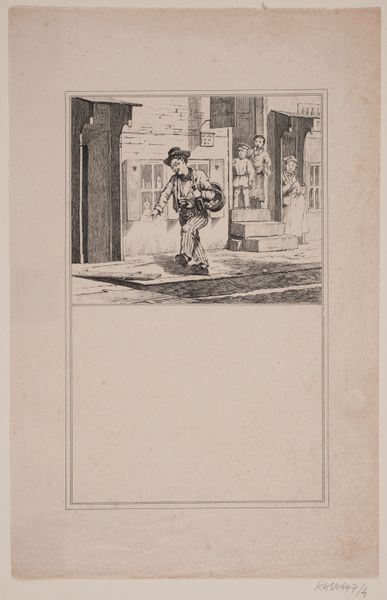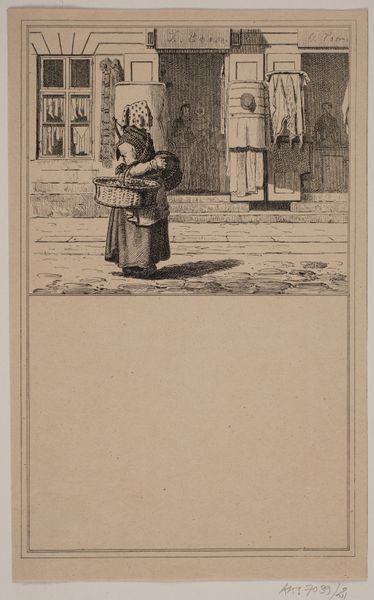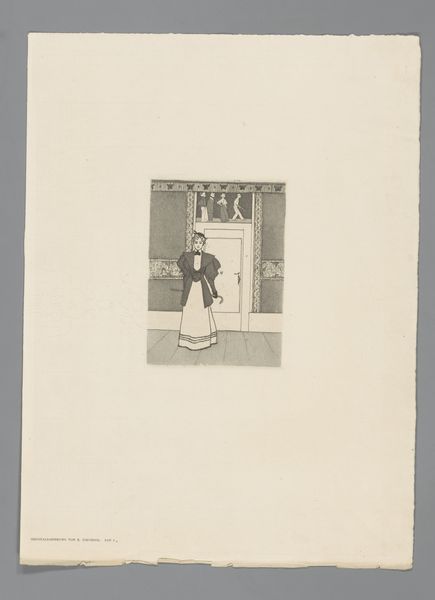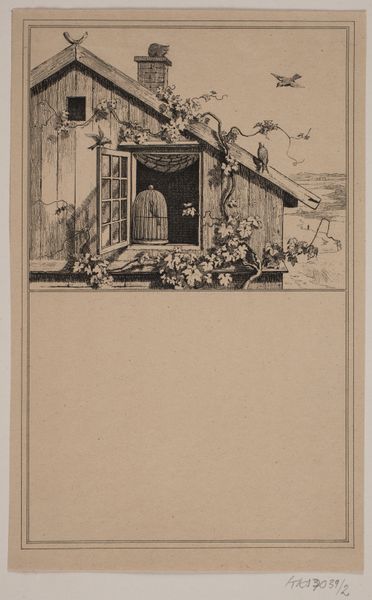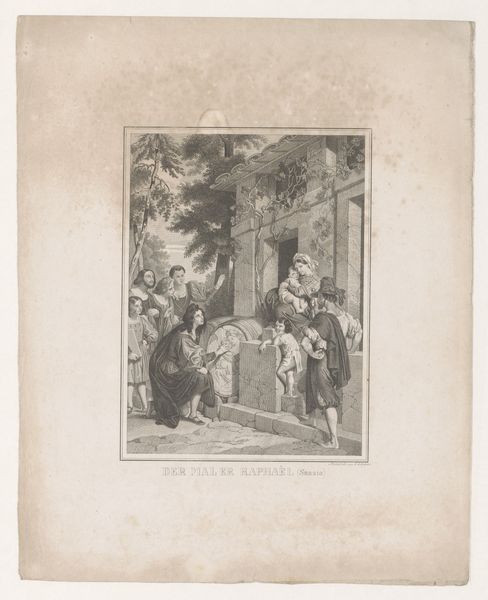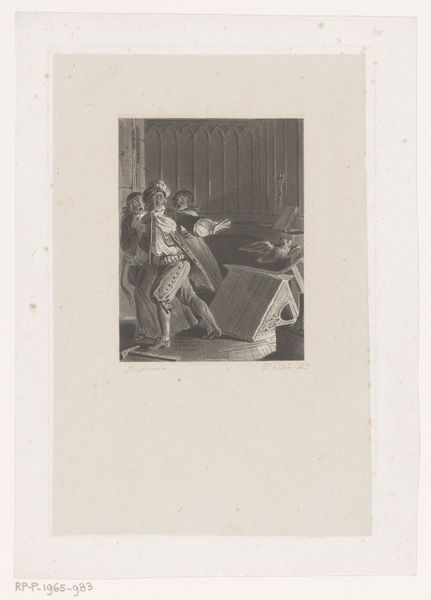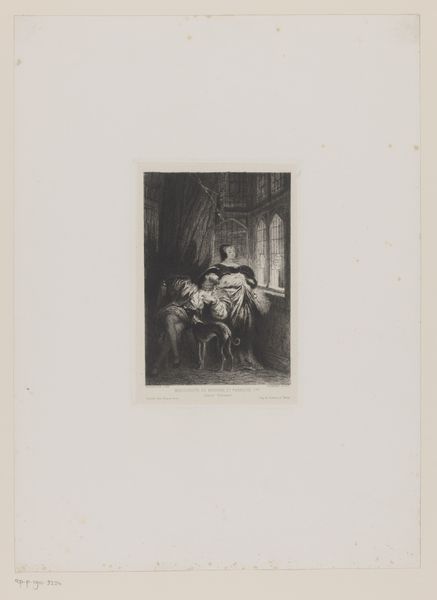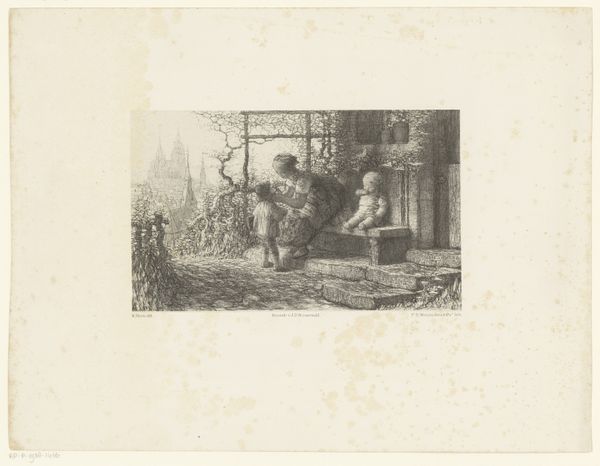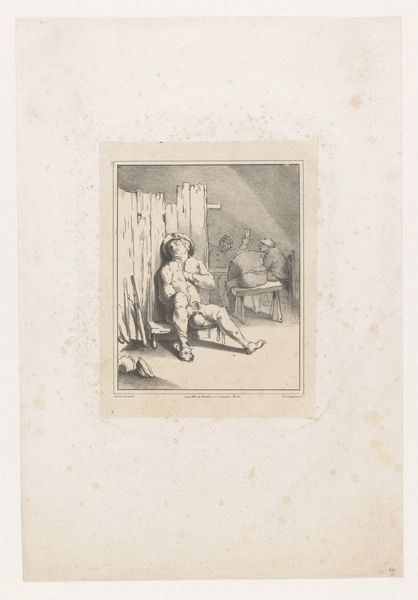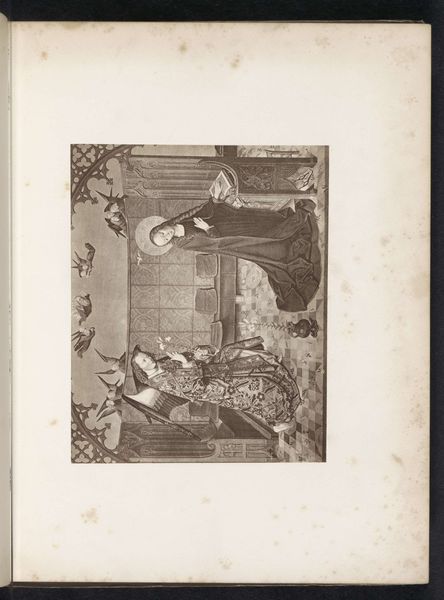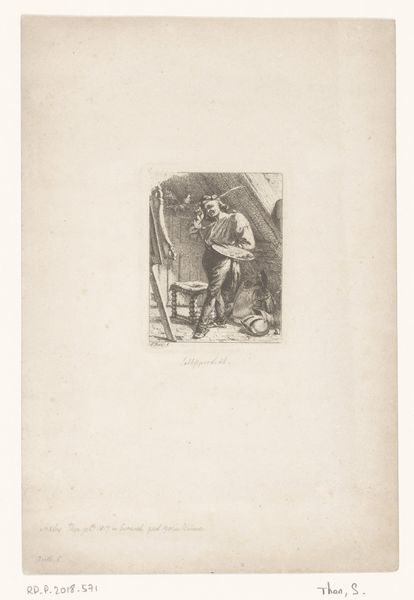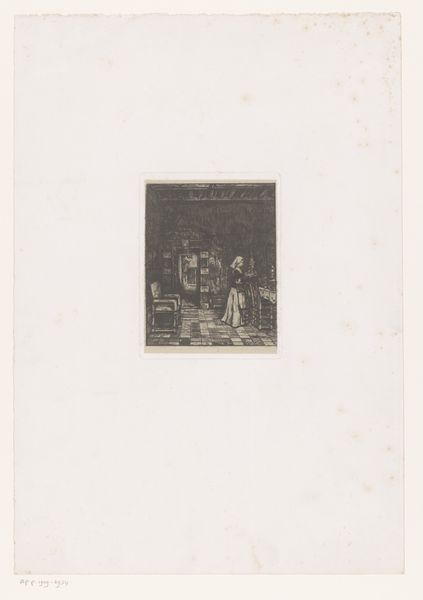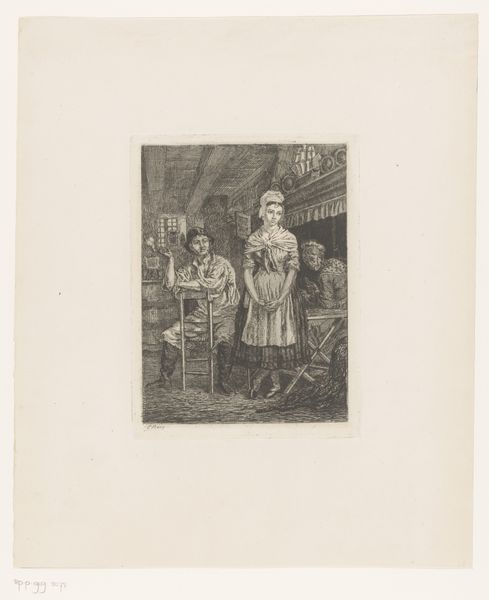
Den drukne. Nr. 3. i Chr. Winther og M. Rørbye, "25 Billeder for små børn" 1846
0:00
0:00
drawing, lithograph, print
#
drawing
#
lithograph
# print
#
figuration
#
romanticism
#
genre-painting
Dimensions: 205 mm (height) x 130 mm (width) (brutto)
Curator: I find myself immediately drawn to the cross-hatching that brings such detail to Adolph Kittendorff's lithograph from 1846, "Den drukne." It's a piece from the series "25 Billeder for sm\u00e5 b\u00f8rn," created in collaboration with Chr. Winther and M. R\u00f8rbye. Editor: The image feels melancholic. It is primarily figuration. The staggering drunkard dominates the foreground, while children look on from a doorstep. I sense a deeper narrative about social vulnerability and the romantic era's perception of vice. Curator: Absolutely. Kittendorff masterfully employs the lithographic medium here. Consider the nuanced textures he creates: the rough stone of the buildings, the soft rendering of fabrics in clothing, the heavy burden suggested in the drunkard’s body through line weight and shading. Editor: The contrast of light and shadow further accentuates the romantic underpinnings; these heavy lines shape not only the subject, but tell stories of materiality, the limestone upon which the image was wrought, the economics that placed these subjects on those streets... it invites deeper exploration of material agency. The bottle barely visible could imply cheap industrial processes used to create the very material impacting our subject. Curator: You pinpoint key elements: romanticism's keen interest in genre-painting. The drunkard archetype becomes an emblem of moral decay, which becomes amplified against the hopeful innocence of children, creating visual tension. These themes speak volumes about contemporary societal beliefs reflected through commonplace symbolism. Editor: I wonder how access to these materials influenced not only the composition, but its meaning for viewers at the time. The rise in industrial printing and availability surely transformed social awareness through accessible, shareable imagery, thereby changing public perception concerning these individuals shown. Curator: Precisely; seeing this image as more than simple depiction is essential for us. It reminds us that artists are witnesses interpreting society for subsequent introspection about culture at a given moment. The placement within "25 Billeder for sm\u00e5 b\u00f8rn," designed to guide future audiences... This brings it all back to Kittendorff being influenced through moral frameworks presented here within genre-painting itself. Editor: Indeed; seeing both process and product enriches the layers. This work highlights material culture; hopefully more than "just a picture", it might then serve ultimately as history being touched, created and engaged with still to come after so long-- materials holding a narrative together always reaching beyond time.
Comments
No comments
Be the first to comment and join the conversation on the ultimate creative platform.
